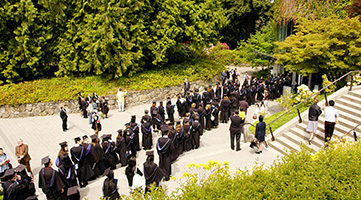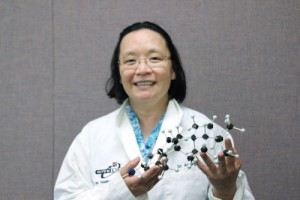 “Cholesterol ring cleavage by Mycobacterium tuberculosis”, by Adam Crowe, PhD Candidate, Eltis Lab, UBC.
“Cholesterol ring cleavage by Mycobacterium tuberculosis”, by Adam Crowe, PhD Candidate, Eltis Lab, UBC.
Monday, December 11, 2017 at 3:00 pm, LSC#3, 2350 Health Sciences Mall.
Posted on December 4, 2017
 “Cholesterol ring cleavage by Mycobacterium tuberculosis”, by Adam Crowe, PhD Candidate, Eltis Lab, UBC.
“Cholesterol ring cleavage by Mycobacterium tuberculosis”, by Adam Crowe, PhD Candidate, Eltis Lab, UBC.
Monday, December 11, 2017 at 3:00 pm, LSC#3, 2350 Health Sciences Mall.
Posted on November 24, 2017
 Congratulations Eric Jan! The Killam Awards for Excellence in Mentoring in the mid-career category recognizes outstanding mentorship of numerous graduate students over many years. Eric fosters intellectual, professional and personal development in his graduate students.
Congratulations Eric Jan! The Killam Awards for Excellence in Mentoring in the mid-career category recognizes outstanding mentorship of numerous graduate students over many years. Eric fosters intellectual, professional and personal development in his graduate students.
Posted on November 24, 2017

Dr. Ross MacGillivray with Jürgen Niesser and Roger Page
Dr. Jürgen Niesser, a postdoctoral fellow in Dr. Natalie Strynadka’s lab, received the 2017 Michael John Page Award on October 26, 2017. Congratulations Jürgen!
The Michael John Page Postdoctoral Award, established in 2013, honours the memory of UBC alumnus, Dr. Michael John Page. This award recognizes a postdoctoral fellow who reflects. Dr. Page’s academic excellence and his passion for life.
Posted on November 16, 2017
 Congratulations Biochemistry graduates!! UBC will be conferring Biochemistry degrees on Friday, November 24th at 9:00 a.m. in the Chan Centre.
Congratulations Biochemistry graduates!! UBC will be conferring Biochemistry degrees on Friday, November 24th at 9:00 a.m. in the Chan Centre.
Posted on November 15, 2017
Posted on November 14, 2017
 “From Discovery to Design: Lessons from the Nitroreductase Superfamily”, Dr. Janine Copp, MSL, UBC.
“From Discovery to Design: Lessons from the Nitroreductase Superfamily”, Dr. Janine Copp, MSL, UBC.
Wednesday, November 15, 2017, 2:30 pm, Room 1510, 2350 Health Sciences Mall.
Posted on October 27, 2017

Congratulations Dorothy!
Dorothy Majewski a doctoral candidate in Dr. Strynadka’s lab was voted by our graduate students to receive the 2017 SH Zbarsky Scholarship. Dr. Sidney Zbarsky was one of our founding members, and in his honour, his friends and colleagues generously donated enough funds to create an annual prize. The award is presented to a third year doctoral trainee who gives the best presentation in the BIOC 530 seminar class, as voted by their fellow students.
Posted on October 19, 2017
 “Harnessing negative regulatory systems to control cell function,” by Alice Mui, Associate Member, Biochemistry and Molecular Biology, UBC.
“Harnessing negative regulatory systems to control cell function,” by Alice Mui, Associate Member, Biochemistry and Molecular Biology, UBC.
Thursday, November 9th, 2017, 3:30 pm, LSC#3, 2350 Health Sciences Mall.
Posted on October 17, 2017
 Enabling Gene Therapy: UBC Research Leads to First Successful Phase 3 Trial for an RNAi Gene Therapy Drug
Enabling Gene Therapy: UBC Research Leads to First Successful Phase 3 Trial for an RNAi Gene Therapy Drug
Alnylam Pharmaceuticals (Boston, USA) and Sanofi (Gentilly, France) announced Tuesday, September 20 the first positive Phase 3 results for an RNA interference (RNAi) drug (Patisiran) which met its primary efficacy endpoint and all secondary endpoints (see http://investors.alnylam.com/releasedetail.cfm?ReleaseID=1041081). Patisiran, which treats an hereditary disease called amyloidogenic transthyretin (ATTR) amyloidosis, is likely to become the first systemic non-viral gene therapy drug to be approved by the US FDA and marks the arrival of an entirely new class of gene therapy medicines.
Patisiran is enabled by a lipid nanoparticle (LNP) delivery technology developed in the laboratory of Professor Pieter Cullis (UBC Biochemistry) in collaboration with Alnylam and two UBC spin-off companies he co-founded: Arbutus Biopharma and Acuitas Therapeutics. Professor Marco Ciufolini of the UBC Chemistry Department also played an important role in developing more potent LNP systems. The LNP technology appears to have general applicability for enabling gene therapies, Acuitas and collaborators have shown that related LNP systems show considerable potential for enabling mRNA to be used as vaccines[1] and to produce therapeutic proteins.[2]
Patisiran consists of LNPs containing short interfering RNA (siRNA) that, if delivered to the interior of a target cell, will “silence” a gene coding for a protein called transthyretin (TTR), a transport protein found in the circulation. Mutations in the TTR gene can cause the TTR protein to aggregate into amyloid plaques that deposit in nerve and cardiac tissue, causing nerve and heart damage. The disease is currently incurable. Among other benefits, the Phase 3 trial showed that treatment with Patisiran improved the neuropathy impairment score in patients, meaning that nerve function stabilized or improved, and the self-reported quality of life improved as compared to treatment with placebo.
Professor Cullis comments that “these results validate work conducted since 1995 to develop LNP delivery systems that facilitate intracellular delivery of RNA and DNA polymers. An incredible team was assembled at Acuitas, Alnylam, Arbutus, and UBC to develop the LNP siRNA nanomedicine now known as Patisiran. Advances made were built on experience gained developing LNP delivery systems in my laboratory at UBC since I established it in 1978, so in many ways the success of Patisiran is the highpoint of my career. I need to acknowledge the efforts of literally hundreds of people who have contributed to the development of this drug, as well as to CIHR and its precursor MRC, who have provided continuous funding to my laboratory for the past 39 years.”
[1] Pardi et al., Zika virus protection by a single low dose nucleoside-modified mRNA vaccination, Nature 248, 543 (2017)
[2] Pardi et al., Administration of nucleoside-modified mRNA encoding broadly neutralizing antibody protects humanized mice from HIV-1 challenge; Nature Communications DOI: 10.1038/ncomms14630 (2017)
Posted on October 5, 2017
The Faculty of Medicine Applegarth Staff Service Awards are annual awards recognizing outstanding contributions by UBC staff members to the Faculty of Medicine. The awards are presented by the Dean at the Faculty of Medicine Annual Awards Reception.
 Doris Metcalf, Graduate Program Coordinator for Biochemistry and Molecular Biology, has given 31 years of unparalleled service to UBC and the Faculty of Medicine. She is an ongoing source of support and guidance to the faculty and students. She is dedicated, efficient, creative and promotes the well-being of others, thereby ensuring a memorable UBC experience for our alumni. Doris’ self-motivated contributions extend across our academic community. She organizes Imagine Day and Graduation Tea for our undergraduates and was instrumental in encouraging our graduate students to form the BMB-GSA, which engages members of the department in social, recreational, and academic events.
Doris Metcalf, Graduate Program Coordinator for Biochemistry and Molecular Biology, has given 31 years of unparalleled service to UBC and the Faculty of Medicine. She is an ongoing source of support and guidance to the faculty and students. She is dedicated, efficient, creative and promotes the well-being of others, thereby ensuring a memorable UBC experience for our alumni. Doris’ self-motivated contributions extend across our academic community. She organizes Imagine Day and Graduation Tea for our undergraduates and was instrumental in encouraging our graduate students to form the BMB-GSA, which engages members of the department in social, recreational, and academic events.